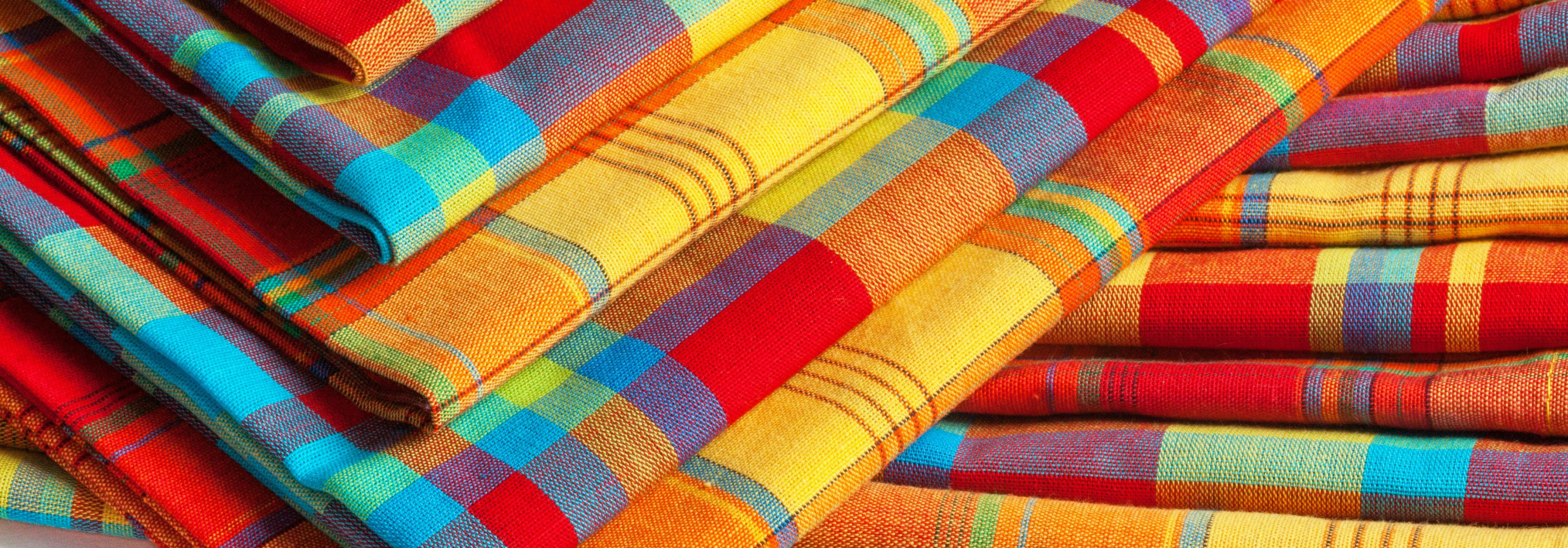Why Is Madras Popular in the Caribbean? Its Back Story Tells a Disquieting Tale
After I noticed waitresses wearing plaid at my hotel in St. Lucia, I began to wonder. The menu, of all places, told me that the boldly colored pattern is called madras, named after Madras (now Chennai), a city in south India. When I saw it on other Caribbean islands – on tote bags, hats and souvenirs – my curiosity grew. Why were plaids, which many people associate with Scotland, so popular in the Caribbean?
The answer – and how plaids became the symbol of Creole identity in the Caribbean – is a tangled, complex tale about trade, textile trends and colonialism. Today, fashion designers are re-inventing it and, in so doing, are keeping madras relevant.
“From staff uniforms, napkins, tablecloths to décor accents in all guestrooms, madras is still very much part of Anse Chastanet,” says Karolin Troubetzkoy, former the president of the Caribbean Hotel and Tourism Association. “This was a deliberate choice to embrace and highlight our rich, local culture and traditions on St. Lucia.
“It’s part of the national dress of St. Lucia, called ‘the madras,’ jupe in French, jip in Creole or wob dwiyet also in Creole, proudly worn on Independence Day, Jounen Kwéyòl (Creole Day), special occasions and often at church.”
Madras, she notes, is also in the national dress of nearby Martinique, Guadeloupe and Dominica. In Guadeloupe, women wear it during Fetes des Cuisinieres (“cooks’ festival”), and in Dominica on Creole Day.
“You’ll see it on islands from Jamaica to Grenada,” Troubetzkoy says.
Plaid prevails, with variations
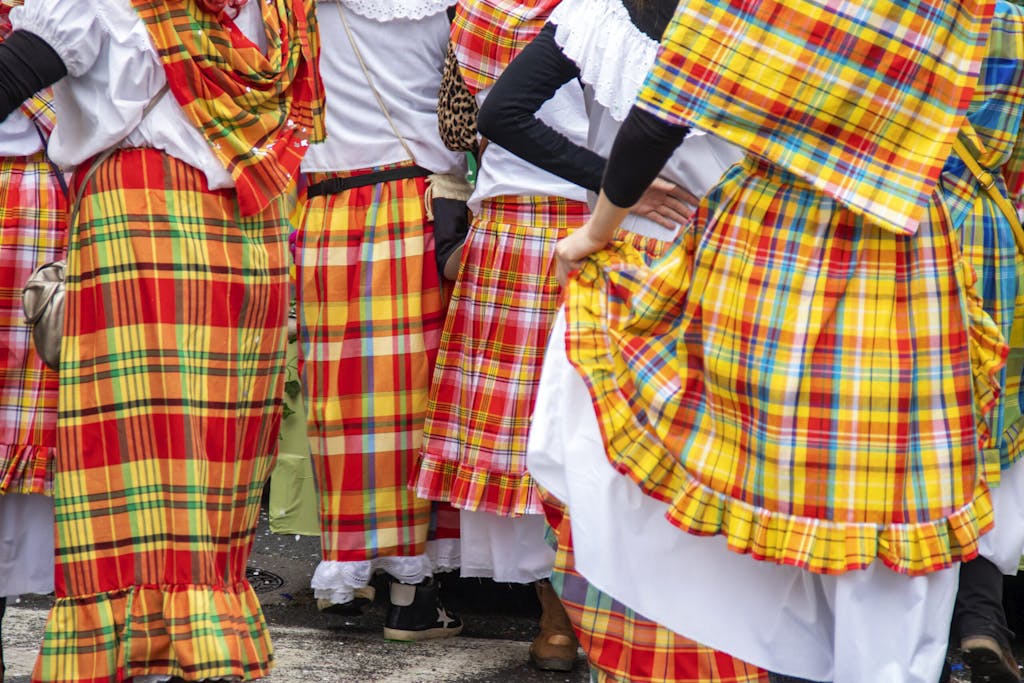
I saw it constantly, in souvenir and clothing shops, at cultural festivals, folkloric dances, on Sunday church goers and on schoolchildren.
In St. Lucia, the national dress for women is a five-piece ensemble that consists of a white cotton or poplin short-sleeved blouse finished in lace and red ribbons, a headdress of folded madras, a long skirt trimmed in lace and ribbons, a shorter overskirt of madras and a triangular scarf pinned to one shoulder and tucked in at the waist. Traditionally, a woman ties her madras headdress into peaks that signal her marital status: One peak means single, two peaks means married, three means widowed or divorced, four means emphatically available.
The headwrap began because plantations once required that enslaved women cover their hair. But over time, women transitioned this requirement into an eye-catching fashion statement, buying vibrant madras at local markets.
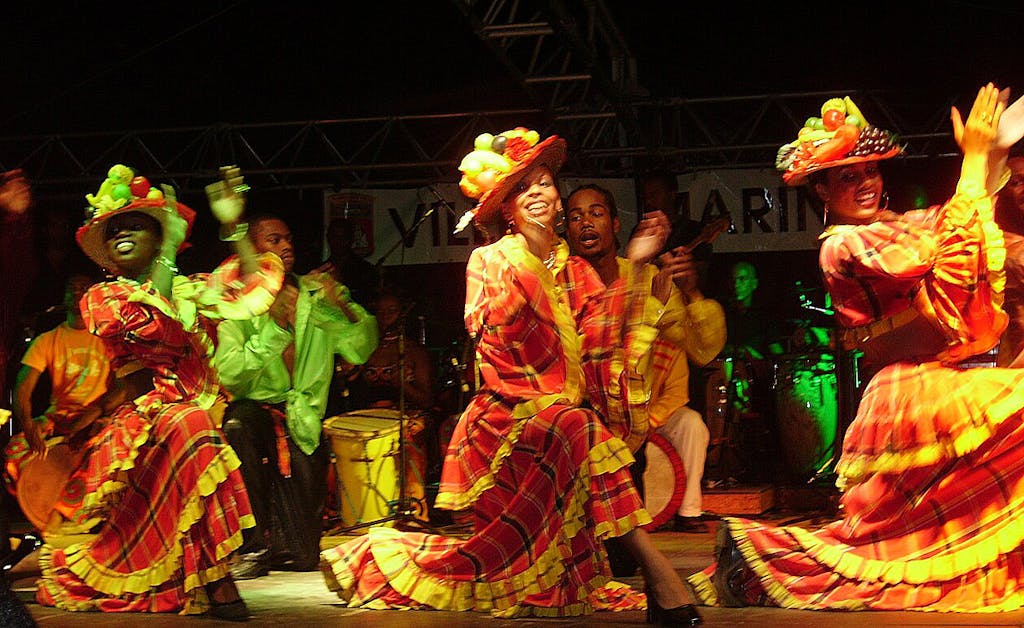
The ensemble’s origin is the long “large dress” (grande robe in French) worn by early French white women settlers but adapted to a warmer climate. (St. Lucia changed hands between the French and British a dozen times in the 18th century but became a member of the British Commonwealth.)
The U.S. Virgin Islands established an “official” madras by law in 2021, after the St. Croix Heritage Dancers landed a grant to create a special madras for its quadrille dancers, a square dance popular in the Caribbean and whose origin stretches back to 18th-century France.
St. Croix textile designer Debbie Sun of Debbie Sun Design Studio was commissioned to design a special plaid in symbolic colors. In this, the official madras has:
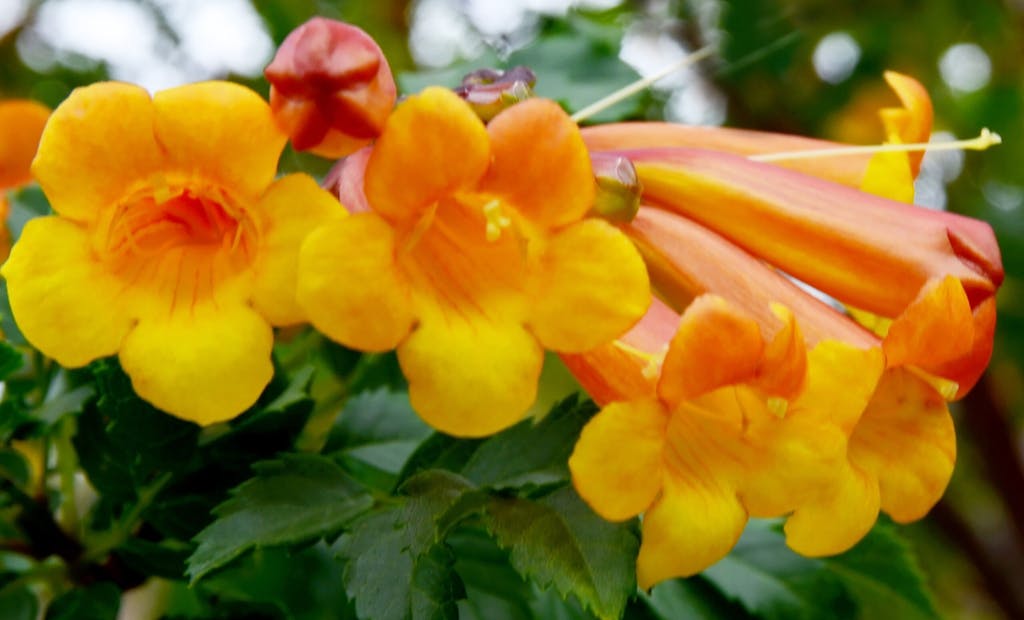
- Turquoise, which represents the Caribbean Sea
- Dark blue, the deep harbor of St. Thomas in the U.S. Virgin Islands
- Yellow for Ginger Thomas, the islands’ official flower
- Green, symbolizing the vast natural resources
- White for dresses islanders once made from bleached flour sacks
- Red for love, strength and the colors of the flags flown over the U.S. Virgin Islands, formerly a Danish colony.
- Pink for the conch shell, blown July 3, 1848, to signal the start of a rebellion by enslaved persons against Danish rule, which prevailed from 1672-1917.
“Our cultural attire in the USVI has traditionally been made from a variety of available madras fabrics in different colors and patterns, but never a specific one to call our own,” Sun says. “For that very reason, we were inspired to create our own unique madras – one with a bold, recognizable design that would stand out and inspire a deep sense of pride and honor in our heritage.
“It’s also used as décor in government and cultural events, for tablecloths, stage decorations and ribbon-cuttings.”
From India to Africa to the Caribbean

Centuries ago, in and near Madras, India, weavers created cotton cloth in checked patterns using natural dyes. Madras, Britain’s first settlement in India, was founded by the East India Co. in 1639 at Fort St. George. (Its name was official changed to Chennai in 1996, part of a renaming process that began in India in 1947.)
Cotton textiles became popular, thanks to their different patterns and colors, lightweight quality and breathability, important in hot climates.
Indian cotton textiles became Britain’s most important export to Africa in the 18th century, skyrocketing from 128,752 items from 1699-1708 to 3.2 million items from 1799-1808. By contrast, Britain’s linen exports to Africa rose from 58,013 to 175,826 in same time. Merchants traded the textiles for enslaved people, gold, salt and more.
“Throughout the age of the Atlantic slave trade, Indian cotton textiles were in great demand in West and West-Central Africa,” writes Kazuo Kobayashi, author of “Indian Cotton Textiles in West Africa: African Agency, Consumer Demand and the Making of the Global Economy 1750-1850.”
“European merchants who could not offer those textiles in exchange would often find it difficult to purchase slaves from African traders. Slaves were exchanged for many different types of Indian cotton cloth.”
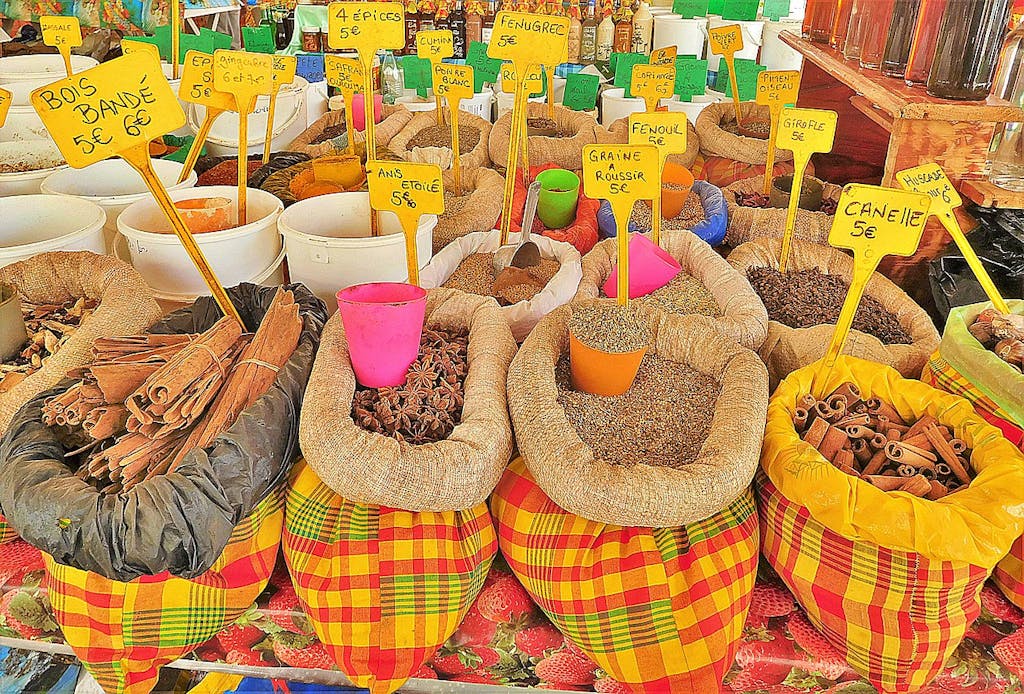
Portuguese, Dutch and French merchants also traded the checked cotton textiles, and ships carried them to Europe’s many Caribbean colonies.
The checked cloth became popular in southern Nigeria among the Kalabari people, who wore it in dresses, headdresses and in religious rituals. It also acquired many names, including “George cloth” (in Nigeria, after Fort St. George in Madras); injiri (“real India,” by the Kalabari); “Guinea cloth” (after the European name for West Africa); and “Real Madras Handkerchief” (in Britain).
London merchant Thomas Lumley & Co. often bought Indian textiles from the East India Co. and resold them to textile merchants in London and Liverpool, who then sailed to West and West-Central Africa to sell them. The East India Co’.s monopoly on trade between England and Asia lasted until 1813.
Because the demand for these textiles far exceeded the supply, many English merchants bought Indian fabrics instead in Amsterdam and Rotterdam, Netherlands, where they were often cheaper.
Most of Lumley’s 130 Indian textile sales in 1801 went to merchants in Liverpool and the Caribbean, plus some in London and Amsterdam, notes Kobayashi, a professor of economic history at Waseda University in Japan. Lumley co-owned slave ships, a common practice among English merchants.
In 1806, the Bedford, one of the ships he co-owned, carried a cargo that was 70 percent textiles exchanged for 244 enslaved persons on West Africa’s Gold Coast at Cape Coast Castle in what is now Chana. They were then sold in Jamaica.
“Over time madras transformed…into a cherished symbol of cultural identity and resilience across the Caribbean,” Troubetzkoy notes.
Plenty of history and layers of complexity lay behind this simple textile. After peeling back the layers, I’ll never see plaid the same way again.
